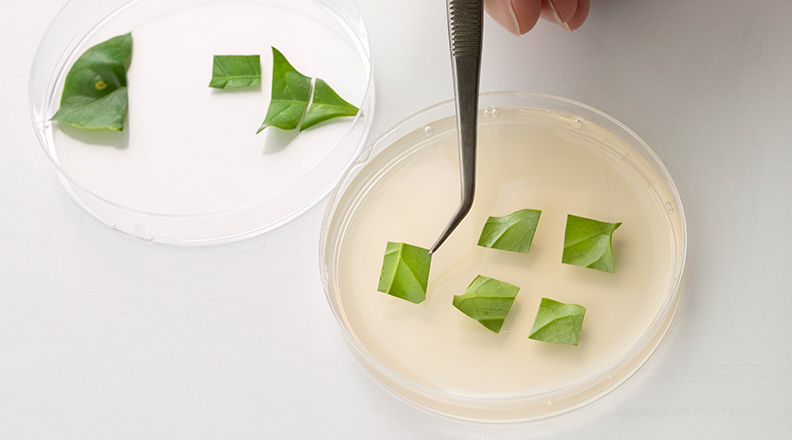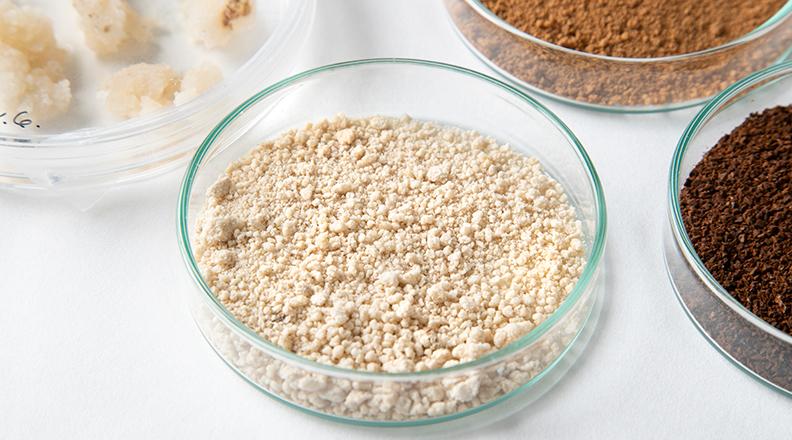Coffee is the Latest to be ‘Grown’ in a Lab
What if you could produce coffee in a lab using fewer resources and without the need for land? Researchers at VTT in Finland have done just that using cellular agriculture.

Like most other food products, the cost of coffee beans is surging—up nearly 43% this year alone. On top of pandemic-related shipping and supply chain issues, extreme weather has damaged coffee crops in Brazil and political protests have stalled exports from Colombia.
“Conventional coffee production is notoriously associated with several problematic issues, such as unsustainable farming methods, exploitation, and land rights,” explains Heiko Rischer, principal scientist at VTT Technical Research Centre of Finland. “Growing demand and climate change add to the problems.”
But what if you could produce coffee in a lab using fewer resources and without the need for land? Rischer and his team have done just that using cellular agriculture, an alternative to conventional farming based on biotechnology that “provides alternative routes for commodities that are less dependent on unsustainable practices,” says Rischer.
While the team is still in the process of examining the coffee biomass in detail, the early results are promising. “At this point, we know that caffeine is produced by the cultures and that the flavor profile of the roasted material and the brew is similar to conventional ground coffee,” notes Rischer. “There is huge potential to affect the character of the coffee by adjusting, for example, culture and roasting conditions.”
The process starts by initiating coffee cell cultures, establishing respective cell lines in the laboratory, and transferring them to bioreactors filled with nutrient medium to produce the biomass. The biomass is then roasted, brewed, before finally undergoing analytical and sensory testing. “In terms of smell and taste, our trained sensory panel and analytical examination found the profile of the brew to bear similarity to ordinary coffee,” says Rischer in a VTT press release.
Decades in the making
The team at VTT has been spent decades working with a wide spectrum of plant species to explore their potential with cellular agriculture. In 2018, the team published a paper discussing the study of plant cell cultures from cloudberry, lingonberry, and stoneberry. They discovered that the resulting biomasses not only had a pleasant, fresh, and mild flavor resembling the corresponding fresh fruits, they were also nutritionally valuable. In fact, Rischer explains that almost all nutritional parameters were better in the biomass produced from the plant cell cultures than those in the corresponding fruits.
“Most published reports either focus on utilizing plant cell cultures for extraction of specific ingredients or approach the topic from a rather theoretical point of view without providing reviewable scientific data,” wrote the researchers in the 2018 study published in Food Research International. Now, the team has successfully shown that cellular agriculture can be useful for more than supplements and ingredients … it can be taken from a raw material to a familiar product. “In the coffee case, we wanted to present something tangible that directly speaks to the consumer,” says Rischer.
Still, there are multiple hurdles to overcome before cellular coffee hits your local grocery store. “Mainly it is about dedicated industrial partners supporting the long-term vision,” explains Rischer. “The approval process is clearly mapped out. Product development and regulatory approval require significant investment, and we want to collaborate with dedicated players from the industry to drive the development.”
And, of course, the processes must be economically viable. “Without a competitive price, the approach will not be successful,” says Rischer. “Future piloting will provide exact number to calculate product costs.”
Digital Exclusives

10 Food Trend Predictions for 2022
The editors at Food Technology magazine, published by the Institute of Food Technologists (IFT), have announced their predictions for the hottest food trends for 2022.
Food Technology Articles

How to Achieve EPR-Forward Packaging
In this two-part series, the author explores the history of Extended Producer Responsibility (EPR), what is needed to help EPR succeed, and how brands can best prepare for EPR.

Future Food-Tech 2024 Tackles Transformation, Underscores Collaboration
Mission-driven Future Food-Tech exhibitors and conference presenters showcased innovative, transformative ingredients and technologies and emphasized the importance of collaboration in addressing food system challenges.

Keeping the ESG Promise
An infographic describing food and beverage companies’ outlooks regarding ESG initiatives.

Ag-Tech’s Passionate Pragmatist
Agrologist and agricultural futurist Robert Saik wants to feed the world better and more sustainably. To make that happen, leveraging science and technology will be critical.

The State of Sensory Science
Three seasoned sensory scientists share their thoughts on the complexity of measuring consumer perceptions, the value of academic/industry collaboration, the evolution of the discipline, and why they love what they do.
Recent Brain Food

A New Day at the FDA
IFT weighs in on the agency’s future in the wake of the Reagan-Udall Report and FDA Commissioner Califf’s response.
Members Say IFT Offers Everything You Need to Prepare for an Uncertain Future
Learn how IFT boosts connections, efficiencies, and inspiration for its members.

More on the FDA's Food Traceability Final Rule
In a new white paper, our experts examine the FDA’s Food Traceability Final Rule implications—and its novel concepts first proposed by IFT.
Job Satisfaction in the Science of Food is High but Hindered by Pain Points
IFT’s 2022 Compensation and Career Path Report breaks it down.








